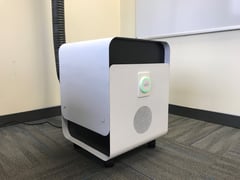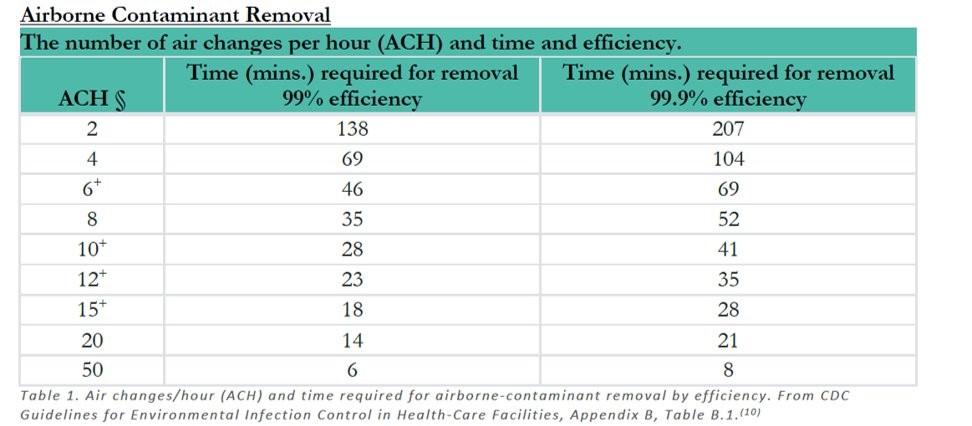Through the ever-evolving pandemic, there have been many regulations and guidelines given for how to make spaces safe when handling COVID-19. In general, the guidance for health care focuses on developing plans for both temporary AIIRs and individual spaces that are negatively pressurized. When creating these spaces, it is important to have a design where the air is exhausted directly outside where it can be diluted or that it passes through a HEPA filter that removes at least 99.97% of harmful particles before it is recirculated.
The ASHE guidelines have several recommendations for creating temporary negative pressure rooms. Options for this setup include:
- Seal off the return air vent into the room
- Have a HEPA filtered negative pressure machine in the room and exhausting outside
- Remove the window and cover the opening
- Keep the door to the room closed
- Verify and monitor negative pressure
- Limit people in and out of the room
After discharging infected patients, the room must be properly ventilated to remove aerosols, as stated in CDC guidelines. The table below shows that at an Air Change per Hour (ACH) rate of 10 (1 air change every 6 minutes) there needs to be 28 minutes to complete 4.66 air changes. At that point, the CDC calculates that airborne contaminants are 99% removed. Being able to increase ACH speeds up the recommended cleaning time allowing for faster safe turnover of patient rooms.
Guidelines for Schools
Within schools, it is important to use a combination of strategies to avoid transmission of COVID-19. A key factor of these strategies is focused around improving ventilation and include:
- Increased air flow to the space
- Increased air changes per hour (ACH) in the space
- Better air filtration
- Run the HVAC system for 2 hours before and after the school is occupied
- Bring portable HEPA filtration devices into high risk areas such as the nurse’s office
- Consider UV light to supplement filtration to further inactivate the virus
In combination with the above suggestions, isolating and quarantining when a positive case is reported helps limit transmission.
Regulations for Long-Term Care Facilities
Like schools, long term care facilities also have a variety of guidelines to follow in order to make spaces as safe as possible during the pandemic. If it is possible, providing each resident’s room with an individual air exchange to help prevent the spread of illnesses. This means residents who are ill can be contained in their rooms without potentially risking infecting others. It is also important to have a plan for how to handle residents who develop COVID-19, such as creating isolation rooms or creating a separate COVID-19 unit. The most effective isolation spaces, and those used in hospitals, incorporate negative pressure.
Setra AIIR Watch
Setra AIIR Watch can be brought into a space to create negative pressure. AIIR Watch has three options for exhausting air: through the window, up through the ceiling tile, and directly into the HVAC return. The ACH of the AIIR Watch depends on the size of the space, and for a standard office it generates 14 ACH. Powerful enough to create a negative pressure room, AIIR Watch is also quiet an unobtrusive, averaging 58 dBA, which is less than a household dishwasher.
Setra AIIR Watch can do more than create negative pressure. It can also purify the air in a space. The AIIR Watch sterilization process is >99.99% effective against bacteria and viruses, as verified via a national recognized testing laboratory (NRTL). The exhaust air is therefore safe to send anywhere, including recirculating as a comprehensive air purification solution. Advanced Particle Count testing is shown to reduce harmful particles in the air by >99.8% in minutes. While purifying the air, ACH and increased air circulation are still being generated.
Meeting the latest guidelines for negative pressure, air quality, and increased ventilation does not require completely renovating a space to make it safe. With Setra AIIR Watch, you can create these necessary elements temporarily, for as long as they are needed.
Citation:
https://www.cdc.gov/infectioncontrol/guidelines/environmental/appendix/air.html



